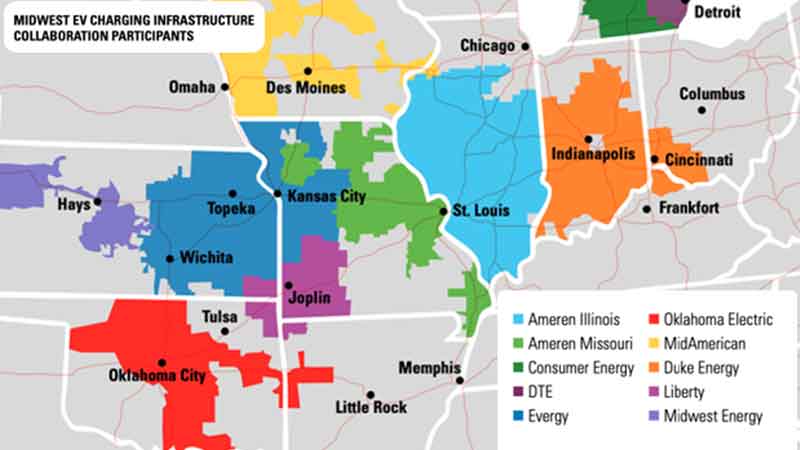“Automakers worldwide are committing huge investments in electric vehicles, with some signaling they’re phasing out fossil fuel engines by 2030,” said Patrick Parke, Midwest Energy’s CEO.
.Midwest Energy signed a memorandum of cooperation with the other utilities, pledging that the co-op would pursue the completion of a foundational electric vehicle (EV) charging network, to soon allow EV owners to drive from Detroit to Colorado, or from northern Michigan to Texas, knowing they can charge their vehicles along the route.
Midwest Energy does not currently own or maintain any EV chargers, but has worked with private companies, including Electrify America and Tesla to install fast chargers in parking lots along Interstate 70. Parke said that joining the collaboration group is well-timed, as electric vehicle strategies are a part of the co-op’s business plans.
“As our oilfield load declines in the future, EV charging will be a critical piece in keeping sales volumes up, and keeping rates competitive for our customers,” Parke said. “One EV charging station can have the equivalent energy use equal to several homes, and when you consider the amount of traffic that passes through our service area, that represents potentially significant growth,” Parke added. “Our customers will not be eager to purchase an EV unless they are confident it can be used for both local commuting and long-distance driving.”
Signatories to the EV Corridor Memorandum of Understanding include Detroit Edison Electric (Michigan); Ameren (Illinois), Amren (Missouri); Consumer Energy (Michigan); Evergy (Kansas and Missouri); Oklahoma Gas and Electric (Oklahoma and Arkansas); Mid-American Energy (Iowa); Duke Energy (Indiana); Liberty Utilities (Missouri, Kansas and Arkansas); and Midwest Energy (Kansas).
Midwest Energy is a customer-owned electric and natural gas cooperative headquartered in Hays, serving 92,000 electric and gas customers in 40 central and western Kansas counties.

